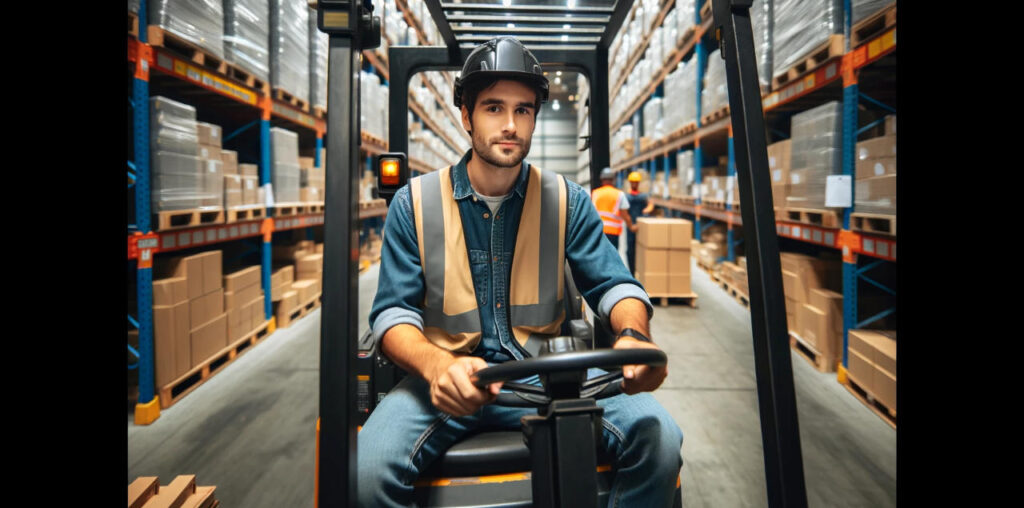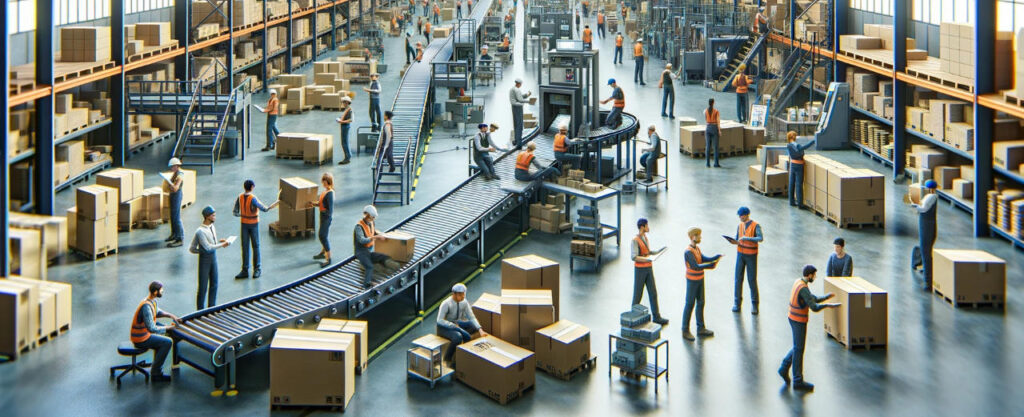Accidents can happen at any warehouse or industrial facility, from shipping hubs to retail storage. Here are a few of the big ones with some specific data to illustrate the real impact each has on a facility.
Forklift-Related Accidents

In 2019, the National Safety Council reported 79 work-related deaths and 8,140 injuries involving forklifts. Accidents often occur when forklifts are improperly used, such as when untrained personnel operate them or when they’re used to lift people instead of products.
MasteryTech.com says that lack of proper training has caused over 3,000 powered industrial violations, which are linked to 95,000+ injuries each year. Surprisingly, a chunk of those injuries aren’t simply those working in the warehouses.
An estimated 20,000 annual forklift injuries are pedestrians and bystanders (including 100 deaths).
Here are some examples of specific forklift-related accidents that are common to warehouses and retail facilities:
- A forklift carrying industrial batteries and food products like flour took a corner too fast and tipped straight over. Aside the potential injury to the forklift driver, this spilled battery acid all over the floor along with the flour, causing a very difficult to clean mess that also presented a real safety hazard to nearby customers.
- A forklift was loading boxes onto a truck, and wasn’t entirely finished. The truck driver thought that the loading was complete and started driving away while the forklift has only halfway out of the back of the truck, causing the forklift to tip and fall ~6 feet, crushing the driver.
- Forklift drivers not paying enough attention sometimes drive into a coworker, or take a quick turn and knock merchandise, boxes, or other machinery over.
Conveyor Accidents

Conveyors can lead to severe caught-in and struck-by injuries. The Bureau of Labor Statistics (BLS) reports nearly 9,000 injuries annually in the workplace due to conveyors. These injuries often occur when loose clothing, hair, or body parts come into contact with the conveyor, or when individuals attempt to remove jammed items from a moving conveyor.
Real-World Consequences: A worker attempting to clear a jammed piece of cardboard from a conveyor belt may inadvertently have their hand drawn into the rollers, leading to crush injuries or worse.
In another instance, an employee’s loose clothing might get caught in the conveyor, pulling them into the machinery, resulting in broken bones, lacerations, or even fatal outcomes.
Costs to Facilities: The cost of such accidents is not only measured in human terms but can also have severe financial implications. Workplace injuries from conveyors can lead to lost productivity, with employees needing time off for recovery.
There could also be increased workers’ compensation premiums, potential fines for safety violations, and the costs associated with stopping production to address the aftermath of an accident.
There have been known cases where a facility was fined up to $150,000 for one accident that resulted in serious injuries. That’s serious enough in itself before even taking into account the indirect costs like lower productivity, damaged morale, and potential lawsuits.
Sometimes these accidents are related to someone not paying enough attention, or of coming to work tired, or even a lack of training. But other times, a messy, dusty environment leads workers to make choices to work around the mess that compromise safety. When that’s the case, warehouse cleaning is a savvy first step.
